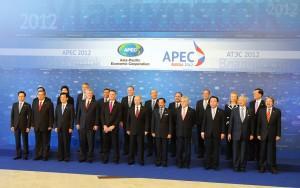 A significant challenge to the deployment of green and environmentally-sustainable goods and services remains their comparatively high costs. Bringing these expenses down requires several different factors, ranging from introducing more efficient technologies and production methods, to tax and other policy incentives that encourage manufacturing, use, and economies of scale. Trade is another important factor, and removing tariff and regulatory barriers that can drive up the costs and limit access to these goods and services is essential to their dissemination.
A significant challenge to the deployment of green and environmentally-sustainable goods and services remains their comparatively high costs. Bringing these expenses down requires several different factors, ranging from introducing more efficient technologies and production methods, to tax and other policy incentives that encourage manufacturing, use, and economies of scale. Trade is another important factor, and removing tariff and regulatory barriers that can drive up the costs and limit access to these goods and services is essential to their dissemination.
A key step forward in this direction took place in September, when Asia-Pacific Economic Cooperation (APEC) members—a group of 21 economies spanning the entire Pacific Rim—agreed to voluntarily reduce applied tariffs on 53 designated environmental goods by 5 percent by 2015. APEC leaders additionally agreed to support capacity-building efforts in member economies, and not to use green growth promotion as a cover for protectionist measures, in order to further deploy these technologies—encouraging trade and investment together with environmental protection.
This development is significant for several reasons. With the increasing globalization of supply chains, and as governments, businesses, and researchers around the world work to develop new technologies to address climate change and promote green growth, ensuring open flows of these goods and services is essential to bringing costs down and disseminating their use as widely as possible. At the same time, intense competition to reap the job and economic opportunities these technologies offer increasingly risks spilling over into trade wars.
APEC brings together 40 percent of the world’s population, 44 percent of global trade, and 53 percent of global real GDP. It includes the United States, China, and Japan—not only the world’s three largest economies, but also leading innovators and fierce competitors in green goods and environmental technologies. While APEC is a consensus-driven and non-binding forum, commitments made by APEC leaders to facilitate trade and investment in the Asia-Pacific region have had far-ranging impacts. Since APEC’s establishment in 1989, average trade barriers in the region have fallen from nearly 17 percent to 5.8 percent in 2010. APEC’s 1994 Bogor Goals of establishing “free and open trade” among developed member economies by 2010 and all developing members by 2020 have helped catalyze efforts to remove barriers to trade and investment, building momentum in the World Trade Organization process and for initiatives including the Trans-Pacific Partnership trade negotiations.
In recent years, APEC members have made increasing commitments to promoting green growth and “practical, trade-enhancing solutions” to environmental challenges by increasing access to and facilitating the use of environmental technologies. Through their new pledge to reduce tariffs on environmental goods and services—ranging from solar water heaters to wind power generators and water treatment equipment—APEC leaders aim to advance these dual goals. These efforts, based on APEC’s previous patterns, could encourage additional momentum to removing similar barriers to trade and investment within the WTO and other international economic forums.
Image from Gobierno de Chile

